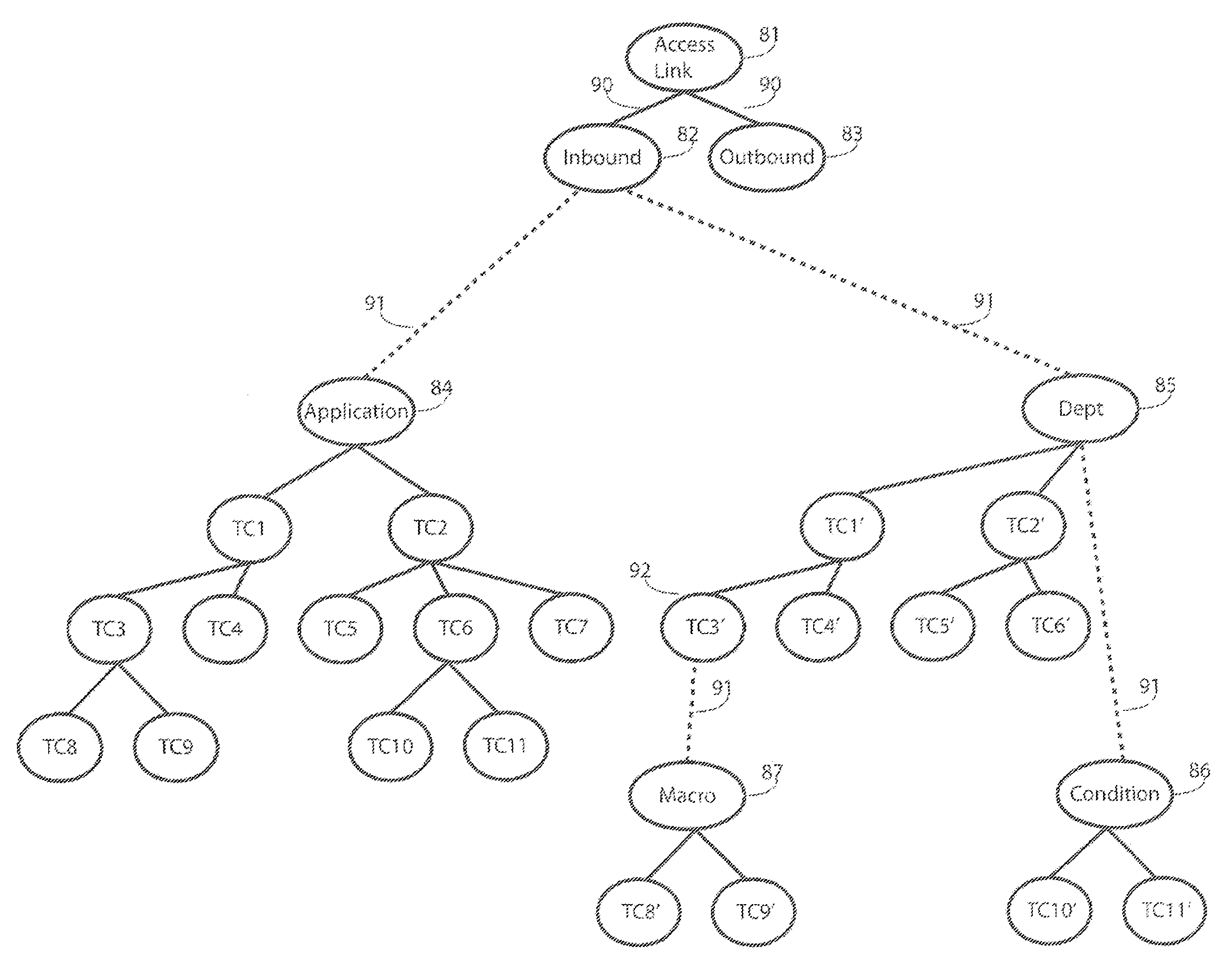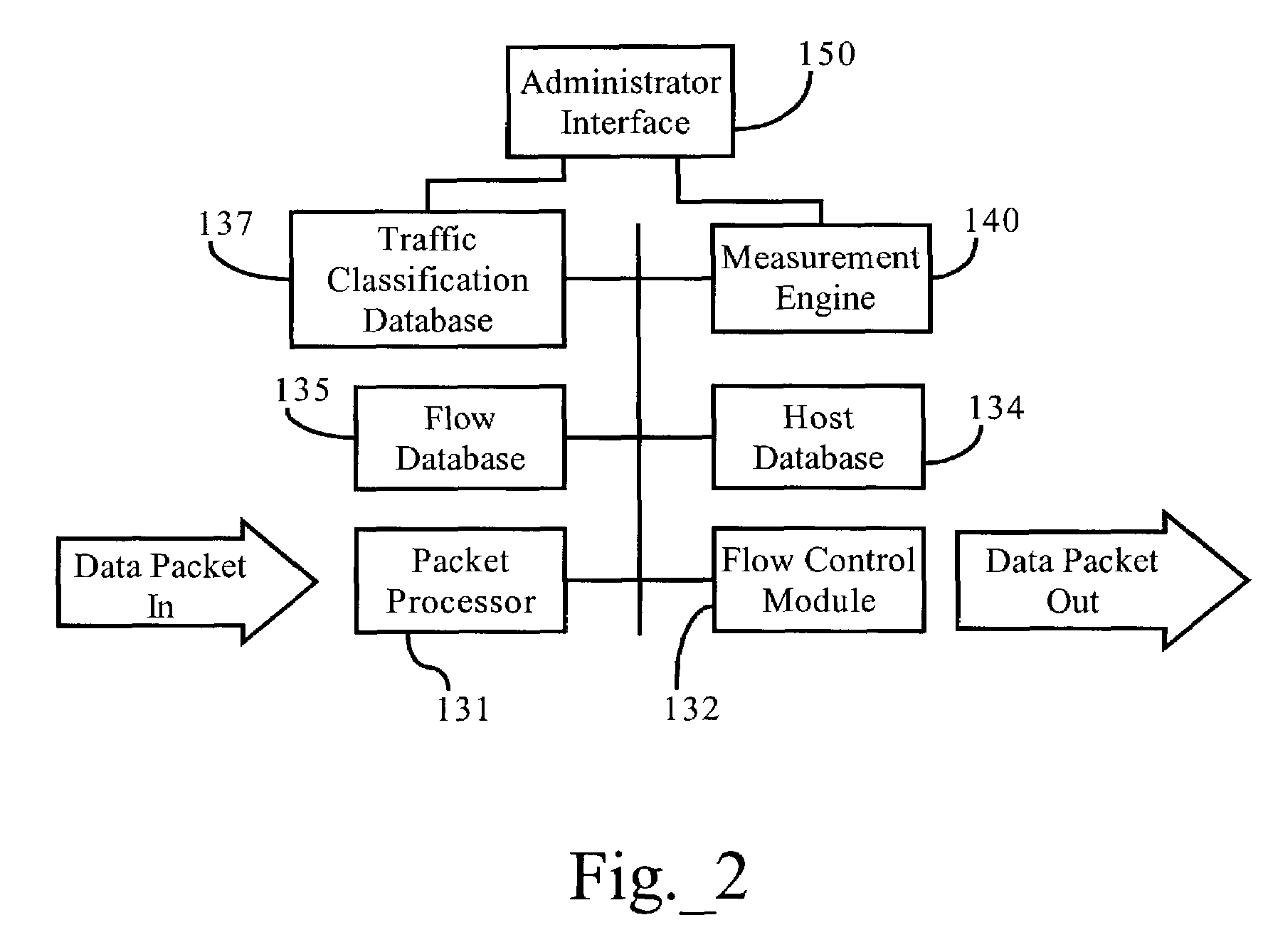Classification data structure enabling multi-dimensional network traffic classification and control schemes
a data structure and classification technology, applied in the field of network traffic classification mechanisms, can solve the problems of affecting the normal operation of data transfer, and affecting the quality of data transfer, so as to facilitate the natural sharing of traffic classification configurations and facilitate the configuration of network traffic classification schemes
- Summary
- Abstract
- Description
- Claims
- Application Information
AI Technical Summary
Benefits of technology
Problems solved by technology
Method used
Image
Examples
Embodiment Construction
I. Exemplary Operating Environment
[0038]FIG. 1 sets forth a packet-based computer network environment including a bandwidth management device 30. As FIG. 1 shows, local area computer network 40 interconnects several TCP / IP end systems, including client devices 42 and server device 44, and provides access to resources operably connected to computer network 50 via router 22 and access link 21. Access link 21 is a physical and / or logical connection between two networks, such as computer network 50 and local area network 40. Server 28 is a TCP end system connected to computer network 50 through router 26 and access link 25. Client devices 24 are additional TCP end systems operably connected to computer network 50 by any suitable means, such as through an Internet Services Provider (ISP). The computer network environment, including computer network 50 is a packet-based communications environment, employing TCP / IP protocols, and / or other suitable protocols, and has a plurality of intercon...
PUM
 Login to View More
Login to View More Abstract
Description
Claims
Application Information
 Login to View More
Login to View More - R&D
- Intellectual Property
- Life Sciences
- Materials
- Tech Scout
- Unparalleled Data Quality
- Higher Quality Content
- 60% Fewer Hallucinations
Browse by: Latest US Patents, China's latest patents, Technical Efficacy Thesaurus, Application Domain, Technology Topic, Popular Technical Reports.
© 2025 PatSnap. All rights reserved.Legal|Privacy policy|Modern Slavery Act Transparency Statement|Sitemap|About US| Contact US: help@patsnap.com



